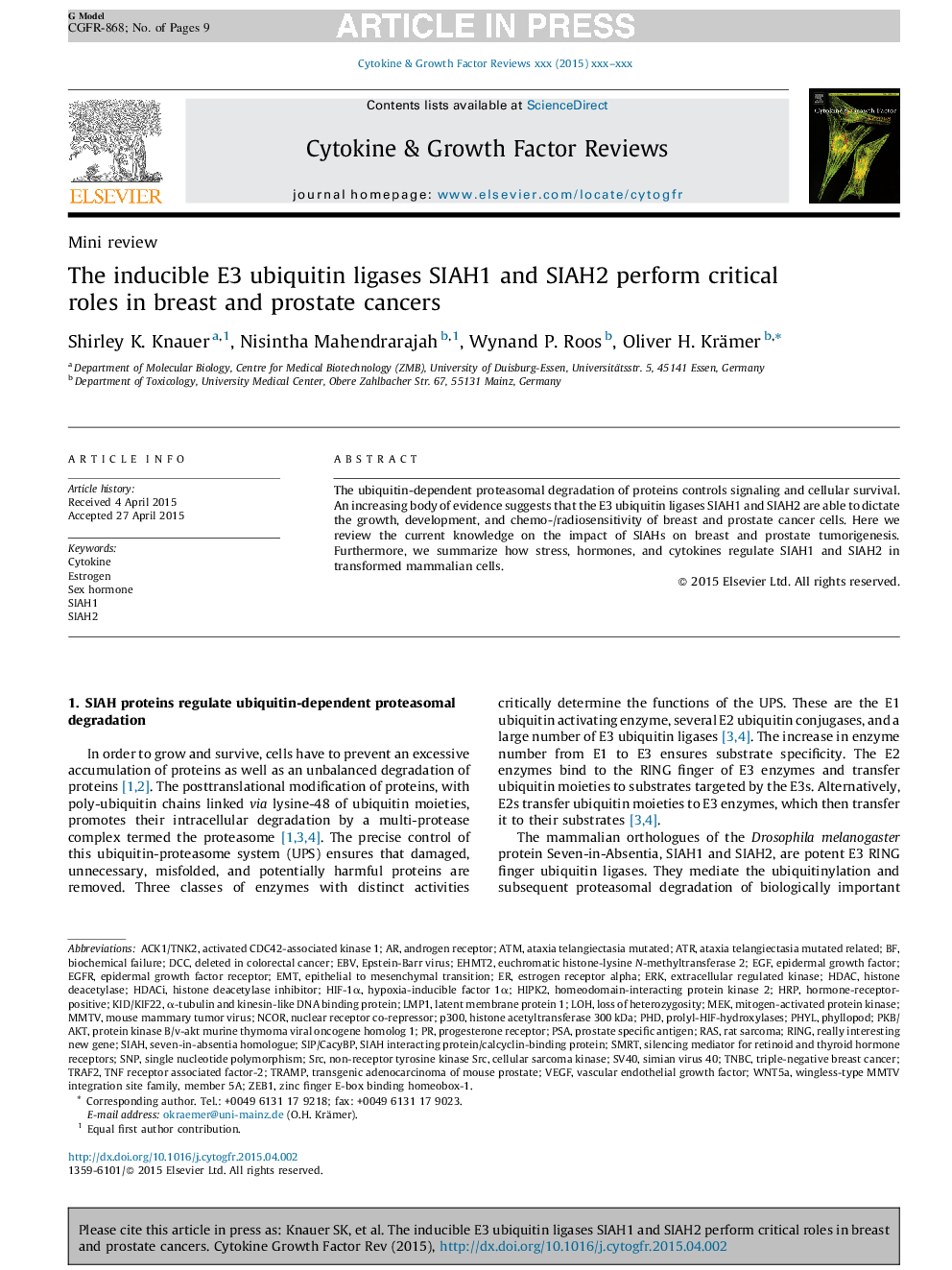| Article ID | Journal | Published Year | Pages | File Type |
|---|---|---|---|---|
| 10930058 | Cytokine & Growth Factor Reviews | 2015 | 9 Pages |
Abstract
The ubiquitin-dependent proteasomal degradation of proteins controls signaling and cellular survival. An increasing body of evidence suggests that the E3 ubiquitin ligases SIAH1 and SIAH2 are able to dictate the growth, development, and chemo-/radiosensitivity of breast and prostate cancer cells. Here we review the current knowledge on the impact of SIAHs on breast and prostate tumorigenesis. Furthermore, we summarize how stress, hormones, and cytokines regulate SIAH1 and SIAH2 in transformed mammalian cells.
Keywords
SV40RASSRCP300HIF-1αHDACiMMTVTRAF2ZEB1PHDWNT5ADCCLMP1SMRTHIPK2PhylSIAHSIAH2Siah1EHMT2wingless-type MMTV integration site family, member 5ATransgenic adenocarcinoma of mouse prostateERKEGFRHDACTNBCNCoRHRPEGFPSAATRataxia telangiectasia mutatedPKB/AKTProstate specific antigenloss of heterozygosityEstrogenEBVepithelial to mesenchymal transitionTRAMPEMTRingSilencing mediator for retinoid and thyroid hormone receptorsATMdeleted in colorectal cancerrat sarcomaTriple-negative breast cancerCytokineBiochemical failurehypoxia-inducible factor 1αepidermal growth factorVascular endothelial growth factorVascular Endothelial Growth Factor (VEGF)LOHMEKhistone deacetylase inhibitorSex hormonehistone deacetylaseEpstein-Barr virusMouse mammary tumor virusSimian virus 40Latent membrane protein 1mitogen-activated protein kinaseHomeodomain-interacting protein kinase 2Single nucleotide polymorphismSNPreally interesting new geneextracellular regulated kinaseAndrogen ReceptorEstrogen receptor alphaEpidermal growth factor receptornuclear receptor co-repressorProgesterone receptor
Related Topics
Life Sciences
Biochemistry, Genetics and Molecular Biology
Cell Biology
Authors
Shirley K. Knauer, Nisintha Mahendrarajah, Wynand P. Roos, Oliver H. Krämer,
